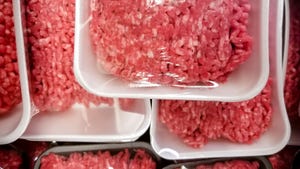How to maintain your business during a market downturn
While cattle prices have held their own so far in 2017, the consensus is that the market will soften over the next several years. Now is the time to prepare.
February 23, 2017

By Gayle Smith
With average cow costs exceeding $800 this year, producers are looking for ways to keep their businesses afloat while riding out the downtrend in the cattle market. It is a hard lump to swallow for some producers, but by being a little savvy, using a sharp pencil and possibly seeking some outside input, ranchers may be able to swallow the lump and continue to operate.
University of Wyoming Extension Educator Dallas Mount encourages producers to evaluate their costs and explore their options. “After spending some time reviewing 20-30 sets of ranch books, I think what ranchers do over the next few years is going to have a profound impact on their business,” Mount says.
Cow costs ranged from $220 to $1,200 per cow in 2016. Mount figures $800 average based on $360 pasture; $40 supplement; $150 for cow depreciation and purchasing replacements; $125 for labor; $50 overhead; $50 vaccinations, marketing and trucking; and $50 for bull costs. Producers will also have varying amounts of interest to add into the equation. Based on these costs, some producers were losing $300 per cow in 2016, he says.
While some operations are still profitable, Mount sees a lot of ranches falling into the red. “Some producers could suck up this kind of loss and roll it into the next year, depending upon how their business is structured,” he says.
“It is also dependent on if you are paying rent for land, a cow note and an operating note. Some producers can withstand these kind of losses for a year, maybe two, but probably not three,” he notes.
Many ranches made changes in their operations while cattle prices were up in years like 2014. Since then, many are paying more costs per cow due to increasing pasture rent, labor costs and bull costs. “We spend a lot of time worrying about the markets,” Mount says. “If we would spend more time determining what our costs actually are, we would have a better idea what options we have.”
Evaluate business segments
Producers can start by evaluating what parts of their business is profitable and which ones aren’t. “Break each enterprise down and look at the numbers,” he encourages ranchers.
“Most operations have something on their ranch that is not working, but until they do the numbers, they won’t be able to figure out what it is. By pinpointing that enterprise, they can stop doing it. They may end up working less, and making more,” he says.
Mount tells producers to look for areas with lots of leverage, where they could make some changes. “We always want to key in on the areas we like and are good at,” he explains. “But these areas may not have major leverage.”
If you want to evaluate your ranch based on one number, it would be the amount of hay fed per cow, Mount says. “That is the greatest correlating number with profitability on a ranch than any other number. That doesn’t mean there aren’t some operations that feed a lot of hay and are profitable, but there are a lot more ranches that feed very little hay and are very profitable,” he notes.
Reducing labor costs is also key to surviving price downturns. Mount recalls a producer he spoke with recently who brought his son back to the ranch when prices were high in 2014, because he could finally afford to do it.
With low cattle prices, the father is now wondering how to fire himself from the operation, and how to make up his loss of income. Mount says a good rule of thumb for labor is $50,000 a hired man, which figures out to $125 per cow. Based on that, a producer would need 400 cows just to pay a hired man.
Some ranches will have tough decisions to make. “For some, it may come down to choosing between the father and his son or daughter who have just recently come back to the operation,” Mount admits.
“In my opinion, the labor cost per cow is the number two determination of profitability on the ranch. The key is to run a simple operation. If you want to make a ranch really hard to be competitive, overcapitalize on labor. A ranch with $250 per cow in labor costs will find it hard to be profitable in today’s market,” he says.
Some ranches may be looking at making some changes to their cowherd. “Often times, we think of our cows as the last thing to go on the ranch, even if they are the least profitable,” he says. “To become a profitable ranch in these times, they may end up being the first thing that needs to go.”
Mount says producers have also suggested alternatives like changing livestock species or adding sheep to the operation, reducing herd size, selling cows and getting out of the business, culling some of the herd, and not retaining replacement heifers. Others suggested communicating with their lender, finding ways to reduce input costs, and improving grazing efficiency.
No set recipe
Mount wants stock growers to understand there isn’t a set recipe for a profitable ranch. “You can be successful by knowing what your niche is, and doing it well,” he explains. “Find ways to do more for less, and get more out of each cow.”
Mount explains each time machinery comes between feed and a cow’s stomach; input costs per cow go up. “It is important to figure out how to graze more, and do it cheaper. It may be by improving the stocking rate on your grass, and becoming a good grazing manager,” he says.
Tackling these problems can be overwhelming, but Mount tells producers to make a plan and schedule who will do what and when. He also finds it helpful to get opinions from other producers and professionals who may see the operation differently. “2017 is a whole new world,” he says. “There are a lot of changes coming in the next few years. It is an exciting time to be in the cattle business.”
Gayle Smith is a freelance writer from Potter, Neb.
You May Also Like



